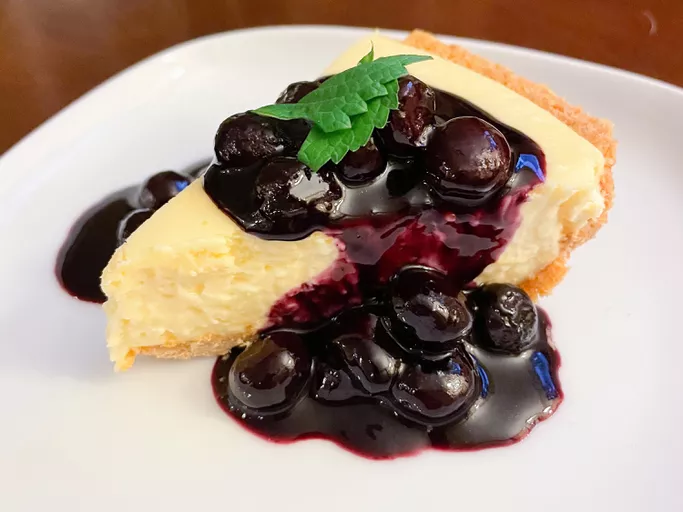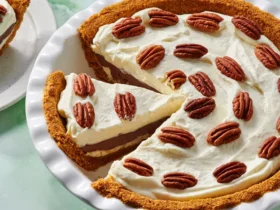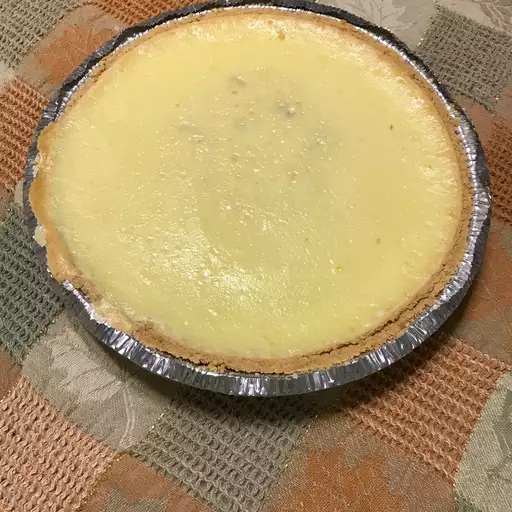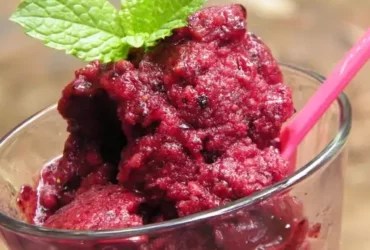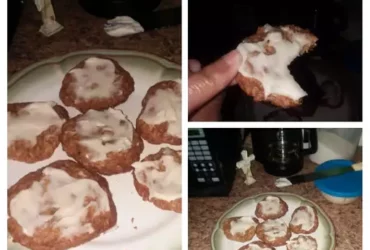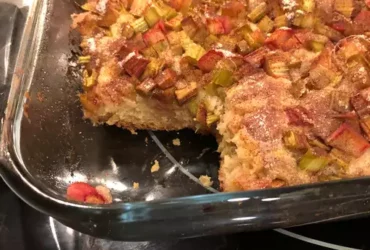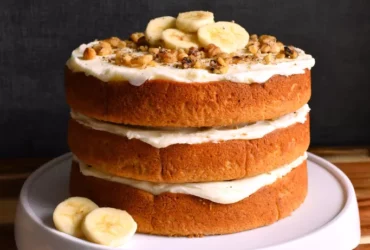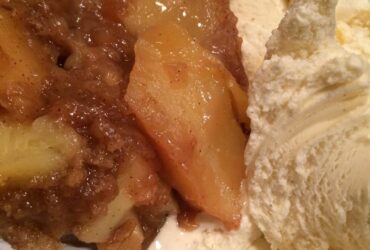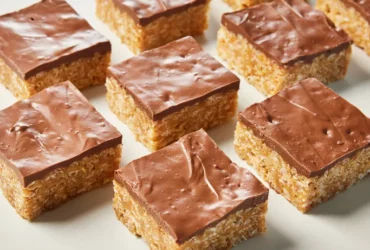Ingredients and Equipment
Creamy Cheesecake Recipe Essentials
To achieve the perfect creamy cheesecake, it’s essential to have the right ingredients and equipment on hand. The foundation of a great cheesecake lies in its rich, creamy texture, which is achieved through a combination of high-quality cream cheese, sour cream, eggs, sugar, and heavy cream.
The following are the key ingredients you’ll need for this recipe:
- For the Crust: 1 1/2 cups graham cracker crumbs, 1/4 cup granulated sugar
- For the Filling: 16 ounces cream cheese, softened (at room temperature), 1/2 cup unsalted butter, softened (at room temperature), 3 large eggs, separated, 1 teaspoon vanilla extract, 1/2 cup granulated sugar, 1/4 cup sour cream
- For the Creamy Topping: 8 ounces heavy cream, 2 tablespoons unsalted butter, softened (at room temperature), 2 cups powdered sugar, 1 teaspoon vanilla extract
In addition to these ingredients, you’ll need some essential equipment to ensure your cheesecake turns out perfectly:
Mixing Bowls
You’ll need large mixing bowls for creaming the butter and cream cheese together, as well as for beating in eggs and sugar. Look for stainless steel or glass bowls, which will prevent scratching and make cleaning easier.
Electric Mixer
An electric mixer is a must-have for this recipe, especially when it comes to beating the heavy cream into stiff peaks and mixing the creamy topping. Choose a stand mixer with multiple speed settings and a powerful motor.
Measuring Cups and Spoons
To ensure accuracy in your measurements, use high-quality measuring cups and spoons that are calibrated for precise measurements.
9-Inch Springform Pan
A non-stick springform pan is a must-have for this recipe. It will make releasing the cheesecake from the pan a breeze and prevent it from sticking or cracking. Choose a pan with a sturdy construction that won’t warp or bend under pressure.
By having these ingredients and equipment on hand, you’ll be well-equipped to create a rich, creamy, and delicious cheesecake that’s sure to impress your family and friends!
Ingredients
- 1 1/2 cups graham cracker crumbs
- 1/4 cup granulated sugar
- 6 tablespoons (3/4 stick) unsalted butter, melted
- 16 ounces cream cheese, softened
- 1/2 cup granulated sugar
- 4 large eggs, separated
- 1 teaspoon vanilla extract
- 1 cup sour cream
- 1 cup heavy cream
- Creamy topping (optional): 1 cup powdered sugar, 2 tablespoons unsalted butter, softened, 1/2 cup heavy cream
Equipment
- 9-inch springform pan
- Mixing bowls and utensils
- Electric mixer (stand or handheld)
- Whisk
- Spatula
- Baking sheet lined with parchment paper
- Water bath container (a large roasting pan or a separate water bath device)
Note: To ensure a smooth and even cheesecake, it’s essential to use room-temperature ingredients and to not overmix the batter.
1 1/2 cups graham cracker crumbs
To make a delicious creamy cheesecake, it’s essential to have the right ingredients and equipment. Let’s start with the ingredients:
For the crust, you’ll need:
1 1/2 cups graham cracker crumbs: These are the foundation of your cheesecake crust, providing a crunchy texture and a sweet flavor. You can use either regular or chocolate-flavored graham crackers, depending on your preference.
In addition to the graham cracker crumbs, you’ll need:
- 1/2 cup granulated sugar: This adds sweetness to your crust and helps balance out the flavors in your cheesecake.
- 10 tablespoons (1 1/4 sticks) unsalted butter, melted: The melted butter is used to bind the graham cracker crumbs together and gives the crust a rich flavor.
Now, let’s move on to the equipment you’ll need:
Mixer or food processor: This is used to crush the graham crackers into fine crumbs. You can also use a rolling pin or your hands to crush them if you don’t have either of these appliances.
9-inch springform pan: A springform pan is essential for making cheesecakes, as it allows the cake to release easily when it’s time to serve. Make sure to grease the pan with butter or cooking spray before adding the crust mixture.
Cooking scale or measuring cups: Accurate measurements are crucial in baking, so make sure you have a reliable scale or measuring cups on hand.
1/4 cup granulated sugar
The ingredients for this Creamy Cheesecake Recipe include:
- 1 and 1/2 pounds cream cheese, softened
- 3 large eggs
- 1/4 cup granulated sugar
- 1/2 teaspoon vanilla extract
- 1/4 teaspoon salt
- 1 cup sour cream
- 1/2 cup granulated sugar (for the crust)
- Graham cracker crumbs (for the crust)
- Confectioners’ sugar (optional, for dusting)
The equipment needed for this recipe includes:
- A 9-inch springform pan
- Mixer or stand mixer
- Hand mixer or whisk
- Silicone spatula
- Measuring cups and spoons
- Electric oven
The granulated sugar in the ingredients list serves to balance out the flavors of the cream cheese, eggs, vanilla extract, and sour cream. It adds a touch of sweetness that complements the tanginess of the cream cheese and sour cream.
1/2 cup unsalted butter, melted
The key to creating a rich and creamy cheesecake lies in the quality and quantity of its ingredients. One essential component is the melted unsalted butter, which plays a crucial role in binding the mixture together. To ensure that your cheesecake turns out perfectly, it’s vital to use high-quality unsalted butter.
The amount called for in this recipe is 1/2 cup, which may seem insignificant compared to other ingredients. However, melted butter serves as both an emulsifier and a flavor enhancer, helping to distribute the cream cheese and eggs evenly throughout the batter.
To melt the unsalted butter correctly, you can use a few different methods: microwaving in short intervals until smooth, gently heating it in the oven or over low heat on the stovetop. It’s essential to avoid overheating, which can cause the butter to separate into oil and solids.
Once your unsalted butter is melted, it should be cooled slightly to prevent it from curdling the cream cheese when combined. The ideal temperature for mixing the ingredients together would be around 75°F (24°C). This will also help maintain a stable consistency throughout the cheesecake’s baking process.
The creamy texture of your finished cheesecake will largely depend on the precise balance between melted butter, cream cheese, eggs, and sugar. As a general guideline, using high-quality, fresh ingredients and accurately measuring them is crucial for achieving the perfect cheesecake.
16 ounces cream cheese, softened
To make this rich and creamy cheesecake recipe, you will need to gather the following ingredients:
- 16 ounces (450g) cream cheese, softened
- 1/2 cup (110g) granulated sugar
- 4 large eggs, separated
- 1 teaspoon vanilla extract
- 1 1/2 cups (190g) graham cracker crumbs
- 1/4 cup (55g) granulated sugar
- 1/2 cup (115g) unsalted butter, melted
- Fresh fruit or whipped cream for garnish (optional)
The equipment you will need to make this cheesecake recipe includes:
- A 9-inch (23cm) springform pan
- A mixing bowl for beating the eggs and sugar
- An electric mixer, such as a stand mixer or handheld mixer
- A rubber spatula for scraping down the sides of the mixing bowl
- A 9×13-inch (23x33cm) baking dish for the water bath
- A digital thermometer to ensure the water reaches the correct temperature for the water bath
3 large eggs
To make a delicious and creamy cheesecake, you’ll need to start with the right ingredients and equipment.
Ingredients:
- 3 large eggs, at room temperature
- 1 1/2 cups graham cracker crumbs
- 1/4 cup granulated sugar
- 8 ounces cream cheese, softened
- 3/4 cup granulated sugar
- 2 large egg yolks, at room temperature
- 1 teaspoon vanilla extract
- 1 cup sour cream
- Cream cheese, softened
The type of eggs you use can greatly impact the final texture and consistency of your cheesecake. Large eggs are recommended as they provide a better balance of moisture and structure to the finished cheesecake.
Equipment:
- A 9-inch springform pan, lined with parchment paper
- An electric mixer, such as a stand mixer or handheld mixer
- a medium bowl for whisking eggs and sugar
- a large mixing bowl for cream cheese mixture
- a rubber spatula for folding in sour cream and vanilla extract
1 teaspoon vanilla extract
The key to making a rich and creamy cheesecake lies in selecting the right ingredients and equipment. For this recipe, you will need:
1 teaspoon vanilla extract : This essential flavor enhancer adds depth and warmth to your cheesecake without overpowering it with an overly strong taste.
As for the equipment required for this recipe, make sure you have:
- A 9-inch springform pan, which allows for easy release and prevents your cheesecake from sticking to the bottom of the pan. Grease the pan with a small amount of butter or non-stick cooking spray to prevent sticking.
- A hand mixer or stand mixer equipped with a whisk attachment, for beating cream cheese and sugar into a smooth, creamy mixture.
- Measuring cups and spoons: To accurately measure out the ingredients required for this recipe.
- An electric oven: Preheat your oven to 325°F (160°C) for even baking of the cheesecake.
1/2 cup sour cream
To make a delicious Creamy Cheesecake, you will need the following ingredients:
For the Crust:
- 1 1/2 cups graham cracker crumbs
- 1/4 cup granulated sugar
- 6 tablespoons (84g) unsalted butter, melted
For the Cheesecake Filling:
- 16 ounces (450g) cream cheese, softened
- 1/2 cup sour cream
- 1/2 cup granulated sugar
- 2 large eggs
- 1 teaspoon vanilla extract
For the Topping:
- 1 cup sour cream (for serving)
- Caramel sauce or fresh fruit for garnish (optional)
You will also need the following equipment to make this Creamy Cheesecake:
- Mixer or food processor to cream together the cheese and sugar
- Electric mixer to beat in the eggs and sour cream
- 9-inch springform pan to bake the cheesecake
- Water bath or baking sheet to prevent cracking
- Spatula to spread the batter evenly in the pan
Note: It’s essential to have a springform pan that can be released easily, as this will help you remove the cheesecake from the pan without breaking or cracking.
The ingredients for this creamy cheesecake recipe are as follows:
- 1 1/2 cups graham cracker crumbs (about 9 crackers)
- 1/4 cup granulated sugar
- 8 ounces (cream cheese), softened
- 3 large eggs, separated
- 1 teaspoon vanilla extract
- 1/2 cup (sour cream)
- 1/4 cup granulated sugar
- 2 tablespoons melted unsalted butter
The equipment needed for this recipe includes:
- A 9-inch springform pan (greased and floured)
- A mixing bowl
- An electric mixer (beater attachment)
- A whisk or a fork for beating eggs
- A rubber spatula for scraping sides of mixing bowls
- A pastry brush for applying melted butter to crust
- An oven thermometer and a timer for ensuring accurate baking temperature and time
- A wire rack or trivet for cooling the cheesecake after removal from oven
Preparing the Cheesecake Batter and Baking
Mixing and Pouring the Creamy Filling
In a large mixing bowl, combine the graham cracker crumbs, sugar, and melted butter to prepare the cheesecake crust.
Press the mixture into the bottom of a 9-inch springform pan, ensuring an even layer and pressing it firmly against the sides of the pan.
Bake the crust in a preheated oven at 350°F (175°C) for 10-12 minutes or until lightly browned.
In another mixing bowl, beat the cream cheese until smooth and creamy, breaking down any lumps with a spatula as needed.
Add the sugar gradually while continuing to mix on medium speed until well combined and smooth in texture.
Beat in the eggs one at a time, fully incorporating each egg before adding the next, making sure not to overbeat the mixture.
Mix in the vanilla extract for added flavor and depth to the cheesecake batter.
Stir in the sour cream to enhance the richness and moisture of the cheesecake.
Pour the cheesecake batter evenly into the prepared crust, making sure not to spill any over the edges.
Bake the cheesecake at 325°F (165°C) for 50-60 minutes or until the edges are set, but the center is still slightly jiggly.
For the creamy filling, mix together the sour cream, granulated sugar, and vanilla extract in a bowl until smooth.
Add the heavy cream gradually while mixing on low speed until well combined and no lumps remain.
Pour the creamy filling over the cooled cheesecake batter, spreading it evenly with an offset spatula or knife to create a marbled effect.
Return the cheesecake to the oven at 325°F (165°C) for an additional 15-20 minutes or until the edges are set and the center is no longer jiggly.
To prepare the cheesecake batter, you’ll need to preheat your oven to a temperature of 325°F (165°C). This will ensure that the cheesecake bakes evenly and prevents it from cracking or burning.
Next, in a large mixing bowl, combine 16 ounces (450g) of cream cheese, which should be softened at room temperature. Make sure the cream cheese is pliable and easy to mix with other ingredients.
Using an electric mixer on medium speed, beat the cream cheese until it’s smooth and creamy, about 2-3 minutes. This will break down any lumps in the cream cheese and make it easier to incorporate with other ingredients.
Once the cream cheese is well beaten, add 1/4 cup (60g) of granulated sugar and mix on medium speed until fully incorporated.
Add 2 large eggs, one at a time, beating each egg thoroughly before adding the next. This will help to break down the eggs and create a smooth batter.
Next, add 1 teaspoon of vanilla extract, which will enhance the flavor of the cheesecake. Mix on medium speed until fully incorporated.
Add 1 cup (120g) of sour cream, which adds moisture and tenderness to the cheesecake. Mix on medium speed until well combined.
Finally, add 1 teaspoon of lemon zest and 2 tablespoons of freshly squeezed lemon juice to balance out the flavors in the cheesecake. Mix on low speed until just combined.
Now that your cheesecake batter is prepared, you can pour it into a greased springform pan or an unbuttered pie plate (8-inch/20cm). To ensure smooth edges and even baking, make sure to level off any excess batter by gently tapping the pan on the counter.
Bake for 55-60 minutes in your preheated oven at 325°F (165°C), which will result in a perfectly baked cheesecake with a slightly golden-brown crust. It’s essential to not open the oven door during this time, as sudden temperature changes can cause the cheesecake to crack.
Once you remove the cheesecake from the oven, let it cool completely on a wire rack before refrigerating it for at least 4 hours or overnight. This allows the cheesecake to set properly and develop its signature creamy texture.
Bias a preheated oven to 325°F (165°C)
To prepare the cheesecake batter, you will need to have all the ingredients ready and within reach.
Begin by preheating the oven to 325°F (165°C). This temperature is crucial for baking a creamy and even cheesecake.
While the oven is heating up, combine the graham cracker crumbs and sugar in a medium bowl. Mix until well combined, then pour in the melted butter. Stir until the mixture forms a uniform crust mixture.
Pour the crust mixture into a 9-inch springform pan and press it evenly into the bottom of the pan. This will be the base of your cheesecake, so make sure to get it right!
Next, beat the cream cheese in a large mixing bowl until it is smooth and creamy. You can use an electric mixer for this step, but make sure to stop and scrape down the sides of the bowl occasionally to ensure everything gets mixed evenly.
Add the eggs one at a time, beating well after each addition. Make sure not to overbeat the mixture at this stage, as it can cause the cheesecake to crack in the oven.
Beat in the sour cream and vanilla extract until well combined. The batter should be smooth and creamy at this point.
Add the granulated sugar and beat until just combined. Be careful not to overbeat again!
Pour the cheesecake batter into the prepared pan over the crust mixture.
Place the springform pan in the oven and bake for 45-50 minutes, or until the edges are set and the center is just slightly jiggly. Avoid overbaking, as this can cause the cheesecake to crack.
Once the cheesecake has baked for the recommended time, turn off the oven and let it cool in the pan for 1 hour. This will help prevent cracking and promote even cooling.
After the cheesecake has cooled in the pan, remove it from the oven and let it cool completely on a wire rack. Once it’s cooled, refrigerate it for at least 4 hours or overnight before serving.
Cutting into the cheesecake is best done when it’s been chilled and set for several hours. Slice it into thin pieces and serve to your family and friends!
Beat the cream cheese until smooth, then gradually add eggs one at a time
To prepare the cheesecake batter and baking process, follow these steps:
Step 1: Prepare the Baking Pan
Clean a 9-inch springform pan and wrap the outside with aluminum foil to prevent water from seeping in during the water bath.
Step 2: Beat the Cream Cheese
Beat the cream cheese until smooth, using an electric mixer or a wooden spoon.
Adding Eggs One at a Time:
- Gradually add eggs one at a time, beating well after each addition.
- Mix in the vanilla extract and beat for another minute to combine.
Step 3: Prepare the Cheesecake Batter
Mix in the granulated sugar until well combined with the cream cheese mixture.
Next, add the sour cream or yogurt, mixing until smooth and creamy.
Add the melted chocolate (if using) and mix until fully incorporated into the batter.
Now it’s time to add the flour mixture. Mix in the all-purpose flour, salt, and cornstarch until just combined.
Baking the Cheesecake:
- Preheat your oven to 350°F (175°C).
- Pour the cheesecake batter into the prepared pan over a water bath (see below for instructions).
Water Bath Instructions:
Place the springform pan inside a larger roasting pan or baking dish. Add hot water to the roasting pan until it reaches about halfway up the side of the springform pan.
Bake and Cool the Cheesecake:
- Carefully place the pans in the oven and bake for 55-60 minutes, or until the edges are set and the center is still slightly jiggly.
- Turn off the heat and let the cheesecake cool in the water bath for about 1 hour.
- Remove the springform pan from the water bath and let it cool completely on a wire rack.
Add vanilla extract and mix well
To prepare the cheesecake batter, you will first need to preheat your oven to 325°F (160°C). This initial step helps create a smooth and even baking environment for your cheesecake.
Next, in a large mixing bowl, combine one and three-quarter cups of graham cracker crumbs and one-quarter cup of granulated sugar. The addition of the sugar enhances the flavor of the crust while also adding texture to it.
Mix these ingredients well until they are evenly combined and resemble fine sand. Then, pour in one-quarter cup of melted butter. This is added to moisten the mixture and hold it together when pressed into a pan.
Afterwards, press this crumb mixture evenly into the bottom of a 9-inch springform pan that has been prepared with parchment paper or greased with butter. You can use your fingers or the back of a spoon to make sure there are no gaps and it is firmly set in place.
Now, in another large mixing bowl, cream together one and a half pounds of cream cheese until it’s light and fluffy. This process helps break down the fat molecules within the cheese, making it more pliable and easier to mix with other ingredients.
Add three large eggs one at a time, beating each egg thoroughly before adding the next. This ensures that air pockets are well incorporated into the mixture and there will be fewer lumps.
Then, add two cups of granulated sugar in three parts. Make sure to mix each addition well until it’s fully incorporated. The high ratio of sugar to fat creates a rich, smooth cheesecake with minimal crystallization on its surface.
Add one teaspoon of vanilla extract and mix well. Vanilla adds a subtle flavor depth that complements the tanginess of cream cheese perfectly, creating a balanced taste experience for your palate.
After thoroughly mixing these ingredients together until they form a smooth batter, gently pour this into the prepared springform pan over the crust you created earlier. Ensure not to scrape the sides or bottom of the bowl with your spatula as you’re pouring it in.
Finally, bake for about 50-60 minutes at 325°F (160°C). When the edges are set and there’s a slight jiggle in the center when the pan is gently shaken, remove it from the oven. However, remember to avoid opening the oven door during this time as it can affect the texture and cause cracking.
Let the cheesecake cool completely in room temperature before refrigerating it for at least 4 hours or overnight to allow it to set properly and ensure maximum flavor development.
Pour the creamy filling over the crust in the springform pan
To prepare the cheesecake batter, begin by preheating your oven to 325°F (165°C). This lower temperature will help prevent the cheesecake from cracking and ensure a smooth, creamy texture.
Next, in a large mixing bowl, combine the cream cheese and granulated sugar. Use an electric mixer to beat the mixture until it is smooth and well combined, stopping occasionally to scrape down the sides of the bowl with a spatula.
Beat in the eggs one at a time, allowing each egg to fully incorporate before adding the next. Be careful not to overbeat the mixture, as this can cause the cheesecake to puff up too much during baking and then collapse.
Once the eggs are fully incorporated, add the sour cream and vanilla extract. Beat until just combined, being careful not to overmix the batter at this stage.
With the mixer on low speed, gradually add the flour and beat until just combined. Be careful not to overmix the batter, as this can cause it to become tough and dense.
Next, stir in the melted chocolate or cocoa powder, if using. This will give the cheesecake a rich, intense flavor.
Pour the creamy filling over the crust in the springform pan, making sure to smooth out the top with a spatula. You can use a rubber spatula or an offset spatula for this purpose, depending on what you have available.
To bake the cheesecake, place it in the preheated oven and immediately reduce the oven temperature to 300°F (150°C). This is crucial for preventing the cheesecake from cracking during baking.
Bake the cheesecake for 50-60 minutes, or until the edges are set and the center is just slightly jiggly. Avoid overbaking, as this can cause the cheesecake to dry out.
After the cheesecake has baked for 45 minutes, rotate it in the oven by 180° to ensure even cooking. This will help prevent hotspots from forming in the oven and causing the cheesecake to become unevenly cooked.
Once the cheesecake is done baking, remove it from the oven and let it cool in the pan for at least 30 minutes before refrigerating it. This will allow the cheesecake to set properly and prevent it from cracking during cooling.
Finally, once the cheesecake has cooled completely, refrigerate it for at least 4 hours or overnight before serving. This will allow the flavors to meld together and the texture to become smooth and creamy.
Key Tips
- Don’t overmix the batter, as this can cause the cheesecake to become tough and dense.
- Use a water bath to prevent hotspots from forming in the oven and causing the cheesecake to become unevenly cooked.
- Rotate the cheesecake after 45 minutes of baking to ensure even cooking.
To prepare the cheesecake batter, you will need to gather all the necessary ingredients and equipment.
The first step is to crust a 9-inch springform pan with a mixture of graham cracker crumbs, sugar, and melted butter. Press the mixture into the bottom of the pan and bake it in a preheated oven at 350°F (180°C) for 10 minutes.
Next, you will need to make the cheesecake batter. Beat the cold cream cheese with an electric mixer until it is smooth. Add the large eggs, one at a time, beating well after each addition. Beat in the vanilla extract.
- Add the sugar, and continue to beat until well combined.
- Melt the bittersweet chocolate and add it to the batter, stirring until smooth.
- Stir in any optional ingredients you like, such as nuts or fruit.
- Pour the cheesecake batter into the prepared pan over the baked crust.
- Smooth the top of the cheesecake with a spatula.
- Bake the cheesecake in a preheated oven at 325°F (165°C) for 45-50 minutes, or until the edges are set and the center is just slightly jiggly.
- Remove the cheesecake from the oven and run a knife around the edges to release it from the pan.
- Lets it cool in the pan for 1 hour, then refrigerate for at least 4 hours or overnight.
Tips for Serving and Storing
Maximizing Freshness and Texture
To maximize freshness and texture of your creamy cheesecake, it’s essential to follow proper serving and storage tips.
Firstly, when serving, always slice the cheesecake just before serving to prevent it from drying out or developing an unpleasant texture.
You can store any leftover cheesecake in an airtight container at room temperature for up to 3 days. However, if you want to keep it fresh for a longer period, consider refrigerating it and consume within 5-7 days.
When storing the cheesecake in the refrigerator, make sure it’s wrapped tightly in plastic wrap or aluminum foil to prevent moisture and other flavors from affecting its texture and flavor.
Before serving, you can also sprinkle a pinch of sugar on top of each slice for added sweetness and crunch. This will not only add visual appeal but also enhance the overall taste experience.
To maintain the cheesecake’s creamy texture, avoid over-mixing or over-baking it. The perfect consistency is achieved when it’s slightly jiggly in the center but still firm on the edges.
For optimal freshness and texture, consider freezing your cheesecake for up to 3 months if you’re not planning to consume it immediately. When you’re ready to serve, simply thaw the cheesecake at room temperature or refrigerate overnight and let it come to room temperature before slicing.
By following these simple serving and storage tips, you’ll be able to enjoy your creamy cheesecake for a longer period while maintaining its original freshness and texture.
To ensure that your creamy cheesecake recipe turns out perfectly, it’s essential to understand the correct techniques for serving and storing.
Serving
When it comes time to serve your cheesecake, make sure it has cooled completely in the pan on a wire rack. This will help prevent cracks from forming as the cheesecake cools and sets.
Once cooled, remove the cheesecake from the pan using the parchment paper or greaseproof paper liner, and transfer it to a serving plate or cake stand.
You can top your cheesecake with whipped cream, fresh fruit, or other toppings of your choice to add flavor and visual appeal.
Storing
To store your cheesecake in the refrigerator, wrap it tightly in plastic wrap or aluminum foil to prevent drying out. You can also place it in a covered container to keep it fresh for longer.
Place the wrapped cheesecake in the refrigerator at a temperature of 40°F (4°C) or below. Cheesecakes typically last for 5-7 days when stored properly in the fridge.
If you don’t plan on serving your cheesecake within a few days, consider freezing it instead. Wrap the cheesecake tightly in plastic wrap or aluminum foil and place it in a freezer-safe bag or container.
When freezing, label the container with the date and contents, and store it at 0°F (-18°C) or below for up to 3 months. When you’re ready to serve, thaw the cheesecake overnight in the refrigerator before serving.
Tips
To prevent cracking, make sure your cheesecake cools slowly and evenly. This can be achieved by placing it in a cold oven or using a water bath.
Avoid opening the oven door while the cheesecake is baking, as this can cause it to crack. If you notice any cracks forming during baking, don’t panic! Just gently cover the top with foil and continue baking until done.
When serving, consider cutting your cheesecake into small pieces or using a cake saw to minimize damage to the texture.
Let the cheesecake cool completely on a wire rack before refrigerating
When it comes to serving and storing creamy cheesecakes, there are several key tips to keep in mind to ensure they remain fresh and delicious.
To begin with, let the cheesecake cool completely on a wire rack before refrigerating. This is crucial to prevent condensation from forming and causing a soggy or watery texture. Allowing it to cool at room temperature will help to set the filling properly and prevent cracking.
Once cooled, wrap the cheesecake tightly in plastic wrap or aluminum foil to prevent drying out. You can also use a cake keeper or airtight container for additional protection against moisture and pests.
When refrigerating the cheesecake, it’s essential to keep it away from strong-smelling foods, as creamy cheesecakes are notorious for absorbing odors. Store it in the coldest part of the refrigerator at a consistent temperature below 40°F (4°C).
To ensure even storage and minimize risk of cracking, you can also place the cheesecake on a serving plate or tray within an airtight container filled with paper towels or cloth to absorb any excess moisture.
Before serving, gently run a knife around the edges of the cheesecake to loosen it from the pan. Then, carefully remove the sides of the springform pan and transfer the cheesecake to your serving plate or tray.
Finally, when storing leftover creamy cheesecakes, be sure to wrap them tightly in plastic wrap or aluminum foil and refrigerate as soon as possible to prevent contamination and spoilage.
If you plan on freezing your cheesecake for longer storage, it’s recommended to wrap it in multiple layers of plastic wrap or aluminum foil before placing it in a freezer-safe container or bag. When frozen, store the cheesecake at 0°F (-18°C) or below for up to three months. Before serving, thaw the frozen cheesecake overnight in the refrigerator and follow the same steps as above.
Refrigerate the cheesecake at 40°F (4°C) or below to ensure food safety
Serving and storing a delicious cream cheese-based cheesecake requires some attention to detail to maintain its texture and flavor.
Serving: When it’s time to serve, remove the cheesecake from the refrigerator about 30 minutes prior to serving. This allows the dessert to reach room temperature, making it easier to cut and slice cleanly.
It’s essential to store the cheesecake in an airtight container at room temperature for no more than two hours before refrigeration or freezing. If you plan to serve it within this timeframe, consider placing it on a serving plate or cake stand.
To prevent moisture from accumulating and making the cheesecake soggy, cover the container with plastic wrap or aluminum foil. This helps maintain a dry environment that prevents bacterial growth and keeps your cheesecake fresh for longer.
For longer-term storage, it’s crucial to refrigerate the cheesecake at 40°F (4°C) or below. This temperature ensures food safety by preventing the growth of harmful bacteria like E. coli, Listeria, and others that can cause serious health issues.
When storing in the refrigerator, ensure the cheesecake is wrapped tightly to prevent contamination from other foods and their juices. You may also consider placing it on a plate or tray to catch any drips or spills.
Freezing is another excellent option for preserving your cheesecake. Wrap the dessert in plastic wrap or aluminum foil, then place it in a freezer-safe bag or container. Label and date the package so you can easily find it later. When you’re ready to serve, thaw the cheesecake overnight in the refrigerator or at room temperature.
When freezing, it’s essential to remember that your cheesecake may become more dense due to the water content. However, this doesn’t affect its safety or flavor.
Use a sharp knife to cut the cheesecake for clean, smooth slices
To ensure that your creamy cheesecake is served and stored properly, follow these tips:
Serving Tips
- Use a sharp knife to cut the cheesecake for clean, smooth slices.
- Cut the cheesecake while it is chilled in the refrigerator. This will help prevent the cheesecake from crumbling or breaking apart.
- Consider using a water bath to serve the cheesecake. This will help keep the cheesecake at room temperature and add a decorative touch.
Storing Tips
- Cover the cheesecake with plastic wrap or aluminum foil to prevent it from drying out. Make sure to press the wrap or foil directly onto the cheesecake to prevent air from getting in.
- Store the cheesecake in the refrigerator at a consistent temperature below 40°F (4°C). Avoid storing it near strong-smelling foods, as the cheesecake can absorb odors easily.
- Consider freezing the cheesecake for longer-term storage. Wrap the cheesecake tightly with plastic wrap or aluminum foil and place it in a freezer-safe bag. When you’re ready to serve, thaw the cheesecake overnight in the refrigerator.
Tips for Freezing and Thawing
- Freeze the cheesecake as soon as possible after baking. This will help prevent moisture from building up and causing the cheesecake to become soggy.
- When thawing the cheesecake, make sure it is completely thawed before serving. If you notice any ice crystals or frozen spots on the surface of the cheesecake, let it sit at room temperature for a few hours to allow it to thaw slowly and evenly.
To ensure that your creamy cheesecake turns out perfectly, it’s essential to follow proper serving and storing tips.
When serving, make sure to let the cheesecake come to room temperature before slicing. This will help prevent cracking and uneven cutting. You can also refrigerate it for about 30 minutes to firm up before serving.
To serve, use a sharp knife to slice through the cheesecake, applying gentle pressure to avoid applying too much force and causing the cake to break or crack.
It’s recommended to serve the cheesecake on a wire rack or a flat surface that can handle moisture, as it will be more stable than serving directly on a table or countertop.
For storage, wrap the entire cheesecake in plastic wrap or aluminum foil and place it in an airtight container. This will prevent air from reaching the cake and causing drying out or mold growth.
If you’re planning to freeze the cheesecake for later use, make sure to wrap it tightly in plastic wrap or aluminum foil and place it in a freezer-safe bag or container. Label the bag with the date and contents, and store it at 0°F (-18°C) or below.
When thawing frozen cheesecake, remove it from the freezer and let it sit at room temperature for about an hour before serving. You can also thaw it overnight in the refrigerator.
To maintain the texture and appearance of your creamy cheesecake, avoid exposing it to extreme temperatures, high humidity, or direct sunlight.
It’s also essential to note that refrigerated cheesecakes typically last 3 to 5 days, while frozen cheesecakes can last up to 2-3 months. However, always check the cake for any signs of spoilage before consuming it.
- Best Datanyze Alternatives for 2025 - April 24, 2025
- Best Hunter.io Alternatives for 2025 - April 22, 2025
- Best Lead411 Alternatives for 2025 - April 22, 2025

